Muscle Relaxant Drugs Market Size
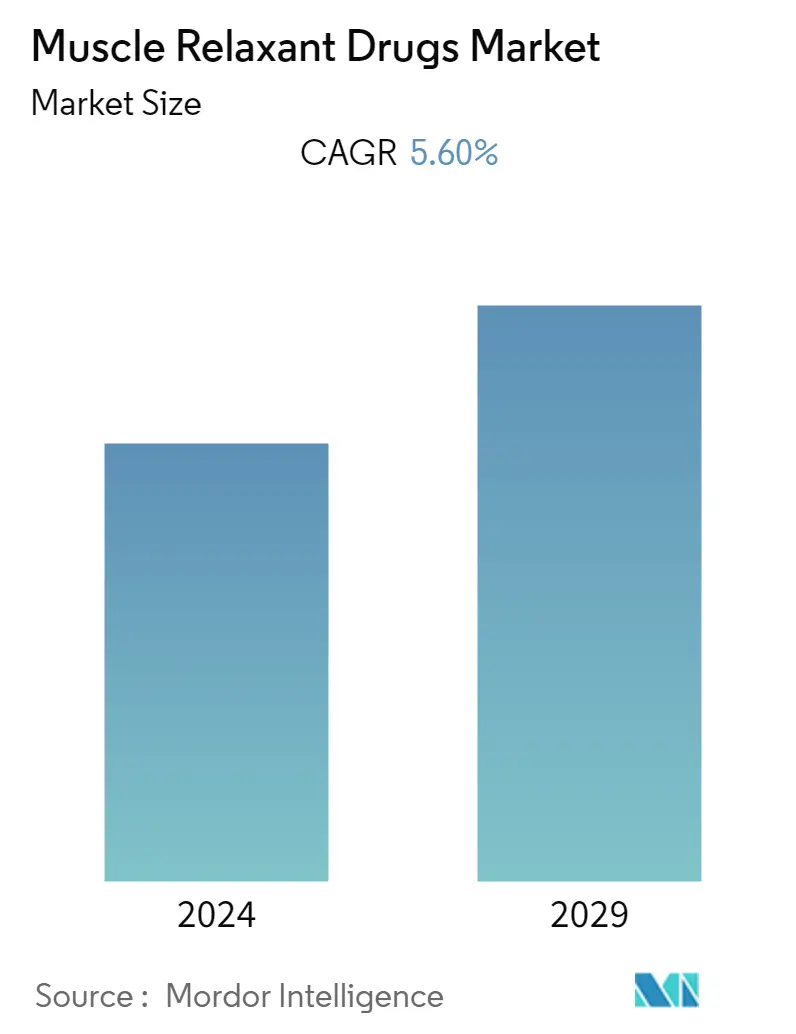
| Study Period | 2019 - 2029 |
| Base Year For Estimation | 2023 |
| Forecast Data Period | 2024 - 2029 |
| CAGR | 5.60 % |
| Fastest Growing Market | Asia Pacific |
| Largest Market | North America |
Major Players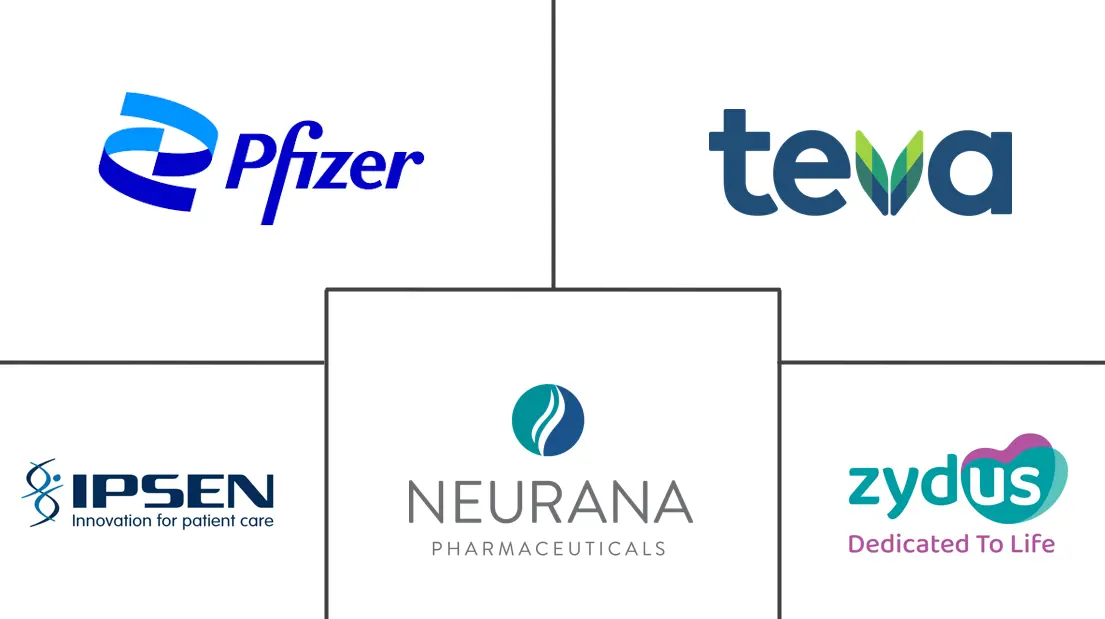
*Disclaimer: Major Players sorted in no particular order |
Muscle Relaxant Drugs Market Analysis
The muscle relaxant drugs market is expected to register a CAGR of 5.6% over the forecast period.
The COVID-19 pandemic significantly impacted the growth of the muscle relaxant drug market. For instance, an article published in Perspectives in Psychiatric Care in March 2021 reported that muscle relaxants effectively reduced anxiety and improved the sleep quality of patients with COVID-19. The article also said that healthcare professionals administered progressive muscle relaxants to patients with COVID-19. Thus, COVID-19 increased the demand for muscle relaxants. However, in the current scenario, it is anticipated that with the decrease in COVID-19 cases, the need for muscle relaxants may get stabilized as compared to the beginning of the pandemic, but the increase in the prevalence of various musculoskeletal disorders is expected to increase the demand for muscle relaxants over the forecast period.
The factors driving the growth of the studied market include rising geriatric populations worldwide and the increase in musculoskeletal disorders. For instance, in 2021, an article published by the Work-Related Musculoskeletal Disorders statistics in Great Britain in 2021 stated that 470,000 people had work-related musculoskeletal disorders who were new or long-standing in the year 2020-2021. In the future, these conditions are expected to worsen and need external help, thereby accelerating market growth.
Similarly, an article published in the journal Annals of Medicine Surgery in December 2021 reported that a survey conducted among 342 doctors working in the operating room in a hospital in North-West Ethiopia in the year 2021 said the prevalence of work-related musculoskeletal disorders was 64.2% among healthcare providers. Thus, the high prevalence of musculoskeletal disorders is expected to increase the demand for muscle relaxant drugs, contributing to the market's growth. Additionally, the increasing prevalence of pain and spasm conditions among the global population and a rising focus on developing novel drugs for treating spasms and pain are other factors bolstering market growth.
Moreover, the increasing geriatric population is driving the demand for muscle relaxants as musculoskeletal disorders are more prevalent in an older population, so muscle relaxants are mainly used to reduce the pain and symptoms associated with these diseases and thus drive the growth of the studied market. For instance, in 2022, United Nations Projections reported that in 2022, there were 771 million people aged 65 years or over globally, and this number is projected to reach 994 million by 2030 and 1.6 billion by 2050. Thus, the increasing geriatric population is more commonly using muscle relaxants, increasing its demand and thus driving the growth of the studied market.
Furthermore, the new product launches by various key market players are expected to drive growth. For instance, in July 2021, Hikma Pharmaceuticals launched a Succinylcholine Chloride injection, USP 20 mg/ml, in the United States. Succinylcholine Chloride Injection, USP was used in the treatment of COVID-19 patients. In addition to general anesthesia, it is indicated to facilitate tracheal intubation and provide skeletal muscle relaxation during surgery or mechanical ventilation. Thus, due to the growing geriatric population, increasing prevalence of musculoskeletal disorders, and new product launches, the market is expected to grow significantly over the forecast period. However, side effects associated with muscle relaxant drugs are acting as a restraining factor to the market growth.
Muscle Relaxant Drugs Market Trends
Neuromuscular Blocking Agents Segment is Expected to Witness Significant Growth Over the Forecast Period.
Neuromuscular blocking agents are potent muscle relaxants typically used only during surgery to prevent muscle movement. They are structurally related to acetylcholine, the primary neurotransmitter in the body, and they cause muscle relaxation by binding to acetylcholine receptors postsynaptically, preventing acetylcholine from binding. This blocks neuromuscular transmission and causes paralysis of the muscle. Neuromuscular blocking agents have been widely used as muscle relaxants as they can expedite rapid endotracheal intubation, facilitate surgical procedures, and aid in mechanical ventilation by relaxing skeletal muscles.
Neuromuscular blocking agents are widely used in surgical procedures. The high number of surgeries is constantly increasing the demand for neuromuscular blocking agents, thereby driving the growth of this segment. For instance, in 2021 Canadian Institute for Health Information (CIHI) reported that during 2020-2021, 106,728 cesarean section delivery, 51,660 hip replacement surgery, and 51,599 knee replacement surgeries were performed in Canada. Thus, such a high number of surgical procedures are increasing the consumption of neuromuscular blocking agents, as these are usually administered during anesthesia to improve surgical conditions, thereby driving the growth of this segment.
Cisatracurium, succinylcholine, doxacurium, and rocuronium are a few examples of neuromuscular blocking agents. Also, product launches for neuromuscular blocking agents are expected to contribute to the segment's growth. For instance, in February 2022, Ritedose launched two unit dose syringe products, rocuronium bromide injection 50 mg/5ml and Rocuronium bromide injection 100 mg/ml. Rocuronium injection is used with general anesthesia medicines for rapid sequence intubation and routine tracheal intubation. This medicine is also used to help relax the muscles during surgery or mechanical ventilation. Thus, the use of neuromuscular reagents in surgical operations and the new product launches are expected to drive the growth of the studied segment during the forecast period.
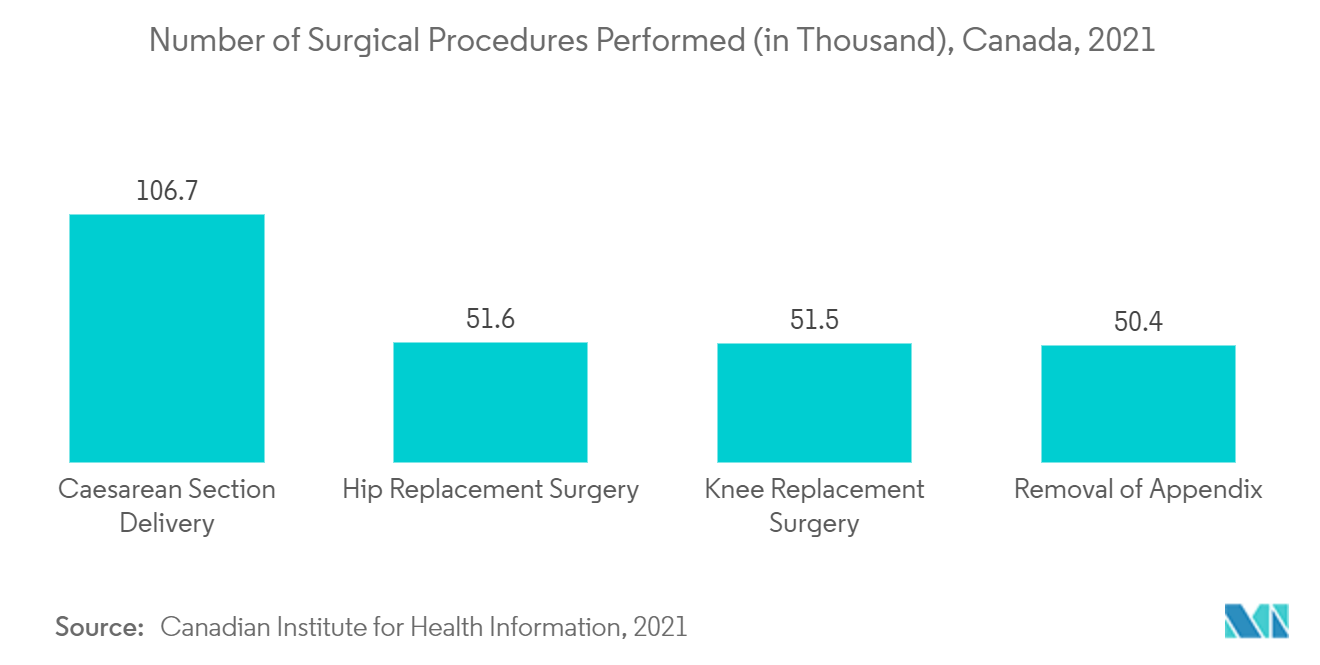
North America Expected to Witness a Significant Growth Over the Forecast Period.
The growth of the North American muscle relaxant drugs market can be primarily attributed to the increasing prevalence of musculoskeletal disorders, regulatory authorities' approval, and several market players' presence. For instance, an article published in the journal Frontiers in Physiology in July 2022 reported that musculoskeletal disorders are one of the most commonly reported medical conditions and are the leading cause of disability in the United States, as they account for more than half of chronic conditions in people over age 50. Thus, growing musculoskeletal disorders are increasing the demand for muscle relaxants and thus driving the growth of the studied market in the region.
Also, the increasing geriatric population in North American countries is driving the demand for muscle relaxants products. This population is more prone to diseases like back pain, muscle tightness, and muscle spasms, including those related to spine injuries. This disorder increases the demand for muscle relaxants and contributes to the market's growth in the region. For instance, in July 2022, the United Nations report stated that the 10.6 million population in Mexico aged 65 and above is expected to increase to 19.7 million by 2040. The geriatric population is expected to increase by 85.8% of its current population by 2040 in Mexico. The source also reported 7.3 million people in Canada aged above 65 years in 2022, and expected to increase to 10.16 million by 2040. Thus, the increasing geriatric population is increasing the demand for muscle relaxants and contributing to the market's growth in the region.
Furthermore, the increased funding for developing muscle relaxant drugs is also expected to contribute to the market's growth. For instance, in November 2021, Delpor, Inc received a National Institute of Health (NIH) grant award of USD 2.5 million for the further advancements of the company's tizanidine implant product (DLP-208) for moderate-severe spasticity. Thus the increasing geriatric population, rising musculoskeletal disorders, and increasing funding are expected to drive market growth during the forecast period in this region.
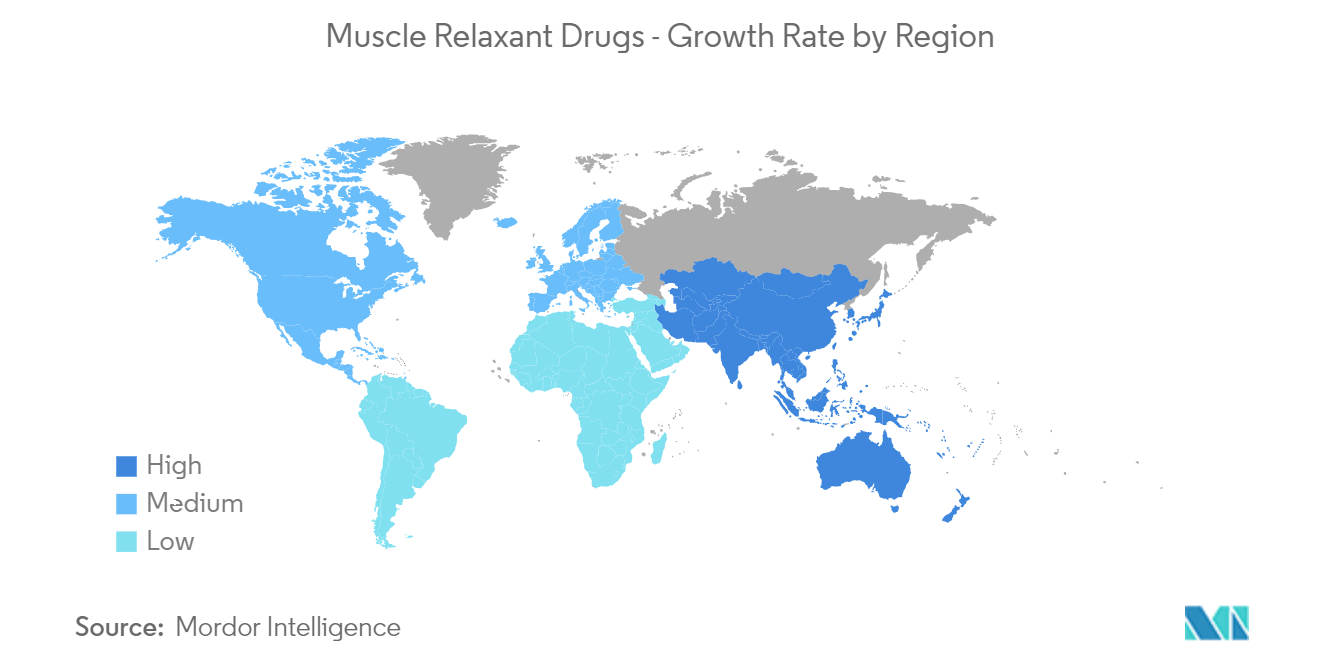
Muscle Relaxant Drugs Industry Overview
The muscle relaxant drugs market is fragmented in nature due to the presence of several companies operating globally as well as regionally. The competitive landscape includes an analysis of a few international as well as local companies which hold market shares and are well-known as Acorda Therapeutics, Dr. Reddy's laboratories, Ipsen Biopharmaceuticals Inc., Lannett, Neurana Pharmaceuticals, Pfizer, Teva Pharmaceuticals, Unichem Laboratories, Zydus Cadila, SteriMax Inc., Endo Pharmaceuticals Inc., and Abbvie Inc.
Muscle Relaxant Drugs Market Leaders
-
Pfizer
-
Teva Pharmaceuticals
-
Zydus Cadila
-
Ipsen Biopharmaceuticals Inc.
-
Neurana Pharmaceuticals
*Disclaimer: Major Players sorted in no particular order
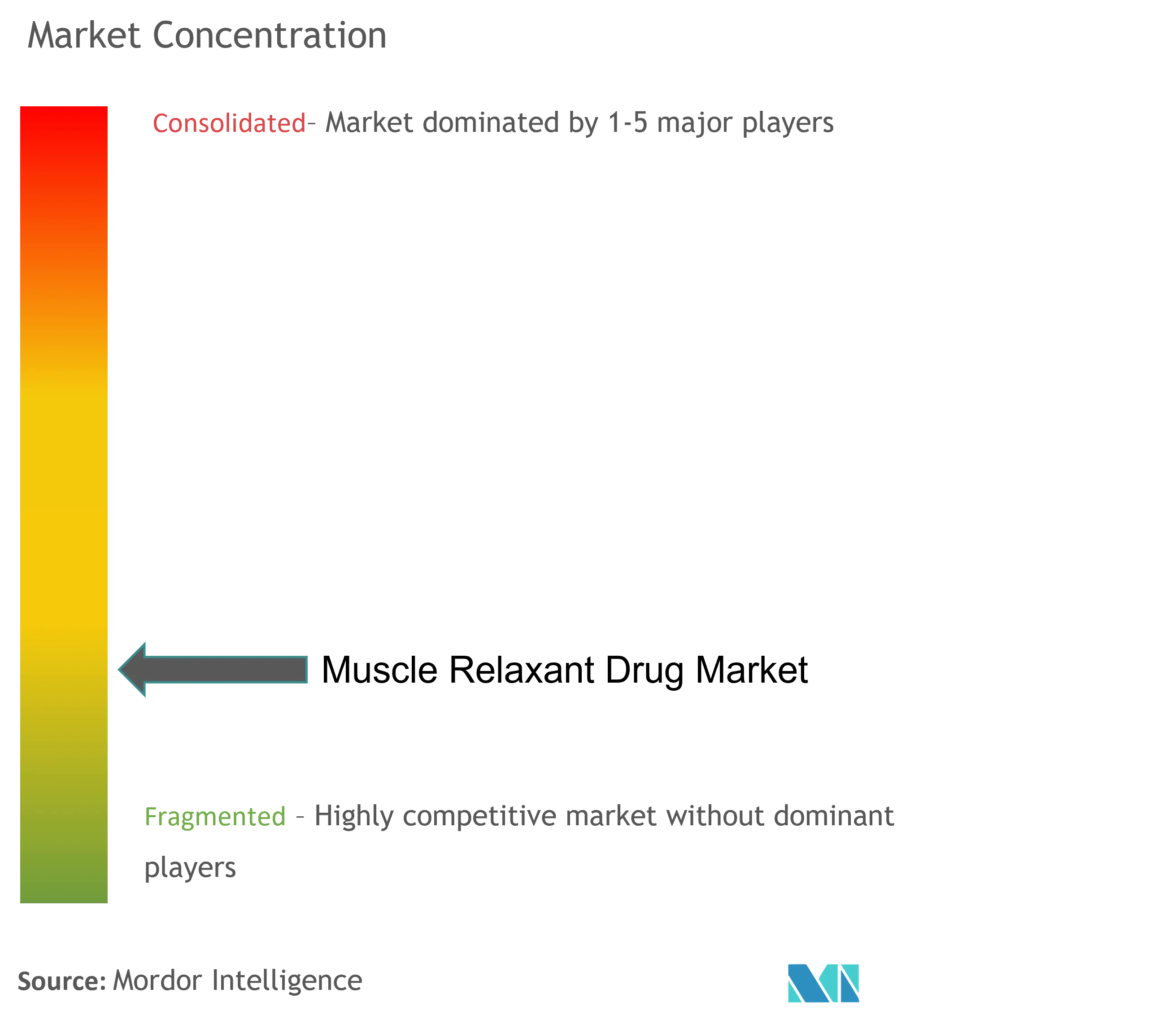
Muscle Relaxant Drugs Market News
- In June 2022, Amneal Pharmaceuticals launched LYVISPAH, a baclofen oral granules specialty product approved by the USFDA for treating spasticity related to multiple sclerosis and other spinal cord disorders.
- In January 2022, Amneal Pharmaceuticals acquired Saol's Baclofen franchise, including Lioresal and LYVISPAH, and a pipeline product under development. The acquisition expanded the company's commercial institutional and specialty portfolio in neurology while adding commercial infrastructure before its entry into the biosimilar institutional market.
Muscle Relaxant Drugs Market Report - Table of Contents
1. INTRODUCTION
- 1.1 Study Assumptions and Market Definition
- 1.2 Scope of the Study
2. RESEARCH METHODOLOGY
3. EXECUTIVE SUMMARY
4. MARKET DYNAMICS
- 4.1 Market Overview
-
4.2 Market Drivers
- 4.2.1 Growing Geriatric Population
- 4.2.2 Increasing Prevalence of Musculoskeletal Disorders
-
4.3 Market Restraints
- 4.3.1 Adverse Effects of Muscle Relaxants
-
4.4 Porter's Five Forces Analysis
- 4.4.1 Threat of New Entrants
- 4.4.2 Bargaining Power of Buyers/Consumers
- 4.4.3 Bargaining Power of Suppliers
- 4.4.4 Threat of Substitute Products
- 4.4.5 Intensity of Competitive Rivalry
5. MARKET SEGMENTATION (Market Size by Value - USD million)
-
5.1 By Type of Drugs
- 5.1.1 Facial Muscle Relaxants
- 5.1.2 Skeletal muscle Relaxants
- 5.1.3 Neuromuscular Blocking Agents
-
5.2 By Dristibution Channel
- 5.2.1 Hospital Pharmacy
- 5.2.2 Retail Pharmacy
- 5.2.3 Online Pharmacy
-
5.3 Geography
- 5.3.1 North America
- 5.3.1.1 United States
- 5.3.1.2 Canada
- 5.3.1.3 Mexico
- 5.3.2 Europe
- 5.3.2.1 Germany
- 5.3.2.2 United Kingdom
- 5.3.2.3 France
- 5.3.2.4 Italy
- 5.3.2.5 Spain
- 5.3.2.6 Rest of Europe
- 5.3.3 Asia-Pacific
- 5.3.3.1 China
- 5.3.3.2 Japan
- 5.3.3.3 India
- 5.3.3.4 Australia
- 5.3.3.5 South Korea
- 5.3.3.6 Rest of Asia-Pacific
- 5.3.4 Middle East and Africa
- 5.3.4.1 GCC
- 5.3.4.2 South Africa
- 5.3.4.3 Rest of Middle East and Africa
- 5.3.5 South America
- 5.3.5.1 Brazil
- 5.3.5.2 Argentina
- 5.3.5.3 Rest of South America
6. COMPETITIVE LANDSCAPE
-
6.1 Company Profiles
- 6.1.1 Acorda Therapeutics
- 6.1.2 Dr Reddy's laboratories
- 6.1.3 Ipsen Biopharmaceuticals Inc.
- 6.1.4 Lannett
- 6.1.5 Neurana Pharmaceuticals
- 6.1.6 Pfizer
- 6.1.7 Teva Pharmaceuticals
- 6.1.8 Unichem Laboratories
- 6.1.9 Zydus Cadila
- 6.1.10 SteriMax Inc.
- 6.1.11 Endo Pharmaceuticals Inc.
- 6.1.12 Abbvie Inc.
- *List Not Exhaustive
7. MARKET OPPORTUNITIES AND FUTURE TRENDS
** Subject To AvailablityMuscle Relaxant Drugs Industry Segmentation
As per the scope of the report, muscle relaxants are a distinct group of medications used to relax or reduce tension in the muscle. Baclofen, methocarbamol, and tizanidine are the few muscle relaxant drugs that work in the brain or spinal cord to block over-excited neuronal pathways. The Muscle Relaxant Drugs Market is segmented by Type of Drugs (Facial Muscle Relaxants, Skeletal Muscle Relaxants, and Neuromuscular Blocking Agents), Distribution Channel (Hospital Pharmacy, Retail Pharmacy, and Online Pharmacy), and Geography (North America, Europe, Asia-Pacific, Middle East, and Africa, and South America). The market report also covers the estimated market sizes and trends for 17 different countries across major regions globally. The report offers the value (in USD million) for the above segments.
| By Type of Drugs | Facial Muscle Relaxants | |
| Skeletal muscle Relaxants | ||
| Neuromuscular Blocking Agents | ||
| By Dristibution Channel | Hospital Pharmacy | |
| Retail Pharmacy | ||
| Online Pharmacy | ||
| Geography | North America | United States |
| Canada | ||
| Mexico | ||
| Geography | Europe | Germany |
| United Kingdom | ||
| France | ||
| Italy | ||
| Spain | ||
| Rest of Europe | ||
| Geography | Asia-Pacific | China |
| Japan | ||
| India | ||
| Australia | ||
| South Korea | ||
| Rest of Asia-Pacific | ||
| Geography | Middle East and Africa | GCC |
| South Africa | ||
| Rest of Middle East and Africa | ||
| Geography | South America | Brazil |
| Argentina | ||
| Rest of South America |
Muscle Relaxant Drugs Market Research FAQs
What is the current Muscle Relaxant Drugs Market size?
The Muscle Relaxant Drugs Market is projected to register a CAGR of 5.60% during the forecast period (2024-2029)
Who are the key players in Muscle Relaxant Drugs Market?
Pfizer, Teva Pharmaceuticals, Zydus Cadila, Ipsen Biopharmaceuticals Inc. and Neurana Pharmaceuticals are the major companies operating in the Muscle Relaxant Drugs Market.
Which is the fastest growing region in Muscle Relaxant Drugs Market?
Asia Pacific is estimated to grow at the highest CAGR over the forecast period (2024-2029).
Which region has the biggest share in Muscle Relaxant Drugs Market?
In 2024, the North America accounts for the largest market share in Muscle Relaxant Drugs Market.
What years does this Muscle Relaxant Drugs Market cover?
The report covers the Muscle Relaxant Drugs Market historical market size for years: 2019, 2020, 2021, 2022 and 2023. The report also forecasts the Muscle Relaxant Drugs Market size for years: 2024, 2025, 2026, 2027, 2028 and 2029.
Muscle Relaxant Drugs Industry Report
Statistics for the 2024 Muscle Relaxant Drugs market share, size and revenue growth rate, created by Mordor Intelligence™ Industry Reports. Muscle Relaxant Drugs analysis includes a market forecast outlook to for 2024 to 2029 and historical overview. Get a sample of this industry analysis as a free report PDF download.



